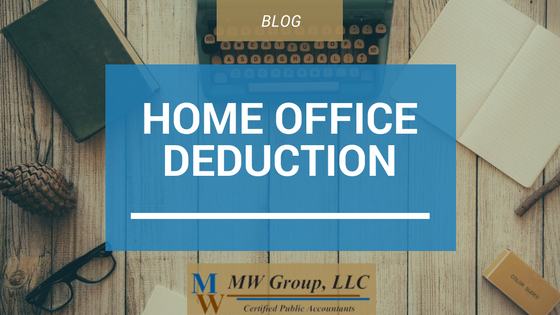 If you’re self-employed and work out of an office in your home, and if you satisfy the strict rules that govern those deductions (discussed below), you will be entitled to favorable “home office” deductions—that is, above-the-line business expense deductions for the following:
If you’re self-employed and work out of an office in your home, and if you satisfy the strict rules that govern those deductions (discussed below), you will be entitled to favorable “home office” deductions—that is, above-the-line business expense deductions for the following:
- the “direct expenses” of the home office—e.g., the costs of painting or repairing the home office, depreciation deductions for furniture and fixtures used in the home office, etc.; and
- the “indirect” expenses of maintaining the home office—e.g., the properly allocable share of utility costs, depreciation, insurance, etc., for your home, as well as an allocable share of mortgage interest, real estate taxes, and casualty losses.
In addition, if your home office is your “principal place of business” under the rules discussed below, the costs of travelling between your home office and other work locations in that business are deductible transportation expenses, rather than nondeductible commuting costs. And you may also deduct the cost of computers and related equipment that you use in the home office, without being subject to the “listed property” restrictions that would otherwise apply.
Tests for home office deductions.
You may deduct your home office expenses if you meet any of the three tests described below: the principal place of business test, the place for meeting patients, clients or customers test, or the separate structure test. You may also deduct the expenses of certain storage space if you qualify under the rules described further below.
Principal place of business.
You’re entitled to home office deductions if you use your home office, exclusively and on a regular basis, as your principal place of business. (What “exclusively and on a regular basis” means is not entirely self-evident. We can help you figure out whether your home office satisfies this make-or-break requirement.) Your home office is your principal place of business if it satisfies either a “management or administrative activities” test, or a “relative importance” test. You satisfy the management or administrative activities test if you use your home office for administrative or management activities of your business, and if you meet certain other requirements. You meet the relative importance test if your home office is the most important place where you conduct your business, in comparison with all the other locations where you conduct that business.
Home office used for meeting patients, clients, or customers.
You’re entitled to home office deductions if you use your home office, exclusively and on a regular basis, to meet or deal with patients, clients, or customers. The patients, clients or customers must be physically present in the home office.
Separate structures.
You’re entitled to home office deductions for a home office, used exclusively and on a regular basis for business, that’s located in a separate unattached structure on the same property as your home—for example, an unattached garage, artist’s studio, workshop, or office building.
Space for storing inventory or product samples.
If you’re in the business of selling products at retail or wholesale, and if your home is your sole fixed business location, you can deduct home expenses allocable to space that you use regularly (but not necessarily exclusively) to store inventory or product samples.
Amount limitations on home office deductions.
The amount of your home office deductions is subject to limitations based on the income attributable to your use of the home office, your residence-based deductions that aren’t dependent on use of your home for business (e.g., mortgage interest and real estate taxes), and your business deductions that aren’t attributable to your use of the home office. But any home office expenses that can’t be deducted because of these limitations may be carried over and deducted in later years. We can help you figure out how these limitations affect your home office deductions.
Sales of homes with home offices.
If you sell—at a profit—a home that contains, or contained, a home office, the otherwise available $250,000/$500,000 exclusion for gain on the sale of a principal residence won’t apply to the portion of your profit equal to the amount of depreciation you claimed on the home office. In addition, the exclusion won’t apply to the portion of your profit allocable to a home office that’s separate from the dwelling unit or to any gain allocable to a period of non qualified use (i.e., a period that the residence is not used as the principal residence of the taxpayer or his spouse or former spouse) after Dec. 31, 2008. Otherwise, the home office won’t affect your eligibility for the exclusion.
We can help. Proper planning can be the key to nailing down the optimum tax treatment for your office at home expenses. We are prepared to assist you with advice about any of the issues discussed above.